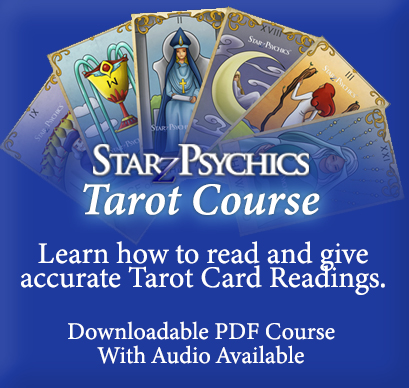- Home
- Editor's Notes
- Current Issue
- Riki Reflects
- Spiritual Traveler
- Starz Emporium
- Classifieds
- Advertise with Us
- Submissions
- Awards
- About Us
- Contact Us
Who is in? Beyond Self-image
By Avikal E. Costantino
.jpg) “I want to find out who I am and what I am doing here”. This is what I heard myself saying one night when I was twenty-seven. My quest became clear in that moment and, without realizing it, I stepped into a river of consciousness as ancient as humanity. Questions like Who am I? What am I doing here? What is the bloody meaning of my life? Are in the back of lots of people minds, in their hearts and guts, especially in teenagers. The questions are surrounded by, enclosed in, hidden behind emotions, angst, uneasiness, longing, hope…However, most times we do not ask them openly so that we can keep coping undisturbed with our daily survival. These existential questions – Koans in the Zen tradition - are not just tools to open the conditioned mind to much vaster dimensions of reality but, even more fundamental, to induce a spontaneous and potent understanding of one’s uniqueness. We are unique. Everybody and everything is unique. In fact, uniqueness is the very manifestation of the abundance and diversity of the Cosmos. And yet, every society seems to have the intrinsic tendency and need to dampen and control the uniqueness of the individual. All in the name of security and survival. It is understandable, but also terribly sad, because it involves a tacit and unconscious agreement with mediocrity, competition, and a striving to be special. Leading to a life crippled with self-judgment and comparison. The realization of who we truly are behind the mask of the social persona has an immediate effect in relation to the number of possibilities that in each moment are available to us. Conditioning is in fact structured through limitations, boundaries, habits, repetition, often very rigid points of view that tend to hinder creativity and freedom of choice. It also enforces a sense of identity based on the past and an apparent continuity in time and space. No matter that mysticism as well as Einstein and modern physics have proved beyond any doubt that time/space is a subjective experience, most of us still move and function as there actually are past, present and future and can be objectively measured. “Time does not exist – we invented it. Time is what the clock says. The distinction between the past, present and future is only a stubbornly persistent illusion.”. A. Einstein. So, I ask, are we willing to be the children of Galileo and Newton rather than the Catholic Inquisition? Are we willing to ask the questions that help us realize how each sentient being is the center of a unique universe? And move beyond self-judgment, comparison, and conflict, toward inclusion, integration and conscious evolution? The question of identity is central to our life and to this book. The “I” we are familiar with, and we use to identify ourselves in day-to-day life is a collection of impressions, memories, inner representations accumulated year after year. This identity is therefore based on a specific history we assume to be true and factual, comprehensible, and continuous and we keep adding to it constantly. What we tend to forget is that this history is based on interpretations and relative perspectives. If we ask any sibling, relative or friend to tell their story of a specific event their recollection/interpretation will most probably range from somehow similar to radically different. Each perspective being the relative truth of the one who has been experiencing the event. This familiar “I” is needed to communicate, survive, interact, self-reflect, and evolve in society. It is an amazingly useful tool, and it is everyone’s responsibility to know it as intimately as possible, investigate it, develop, and refine it. However, it is not who we truly are. It is the core identity of a PERSONA – from the Greek word MASK – and it is fundamentally what psychology calls a Self-image we identify with. As we ask the koans Who am I? Who is in? we start exploring the territories that go beyond a mere description of ourselves based on accumulated past and realize that it is possible to have a direct experience of our nature in the here/now. And in relation to this the great philosopher Ludwig Wittgenstein says: “If we take eternity to mean not everlasting temporal duration but a moment without time, then eternal life belongs to those who live in the Present.” Practicing with the koans we learn to shift our attention:
To end this article few words about Narcissism. Narcissism from a spiritual point of view is one of the most common phenomena in humanity as it implies the compulsive looking outside to know oneself and the world, rather than looking in. This compulsive looking out makes us impotent as we separate from our inner resources and look for solutions, approval, definition, identity externally. It also keeps nurturing an inner shakiness and fear. What if people do not like me? Approve of me? Recognize me? What if people see that I am fake? That I am pretending? And so on. Therefore, narcissism is a core tension that characterizes any personality in its forgetfulness of True Nature. What does it have to do with Compassion? What is the connection between these two? At first sight these two seem very improbable partners and yet? First, here is a basic definition of Compassion… COMPASSION IS THE CAPACITY AND WILLINGENESS TO LET YOURSELF BE. Compassion is therefore an all-inclusive sense of oneself that extends naturally and spontaneously to all there is. Compassion is I AM ALL THAT I AM AND EVERYTHING IS ALL THAT IT IS and I have the capacity and the intelligence to let myself be in all that I am, and everything be as it is in any present moment. There is no rejection of anything that appears moment to moment and there is no hope for anything different. The fundamental movement of “rejection and hope” that defines the activity in the mind is realized in its suchness and integrated. Not judged, not evaluated, not pushed away or attached to, but simply recognized and included like the barking of a dog or the sound of a car outside the window, the rain falling or the clouds moving, the breath coming in and going out, the heart beating. We let ourselves be in every aspect of our existing. Compassion is therefore the conscious dropping of the pressure of becoming in the realization that Being and Becoming are inextricably intertwined and interdependent. As Buddha says: Nirvana is Samsara and Samsara is Nirvana. Then compassion is the door that opens up into the Real within and without and establishes a fundamental ground of understanding and realizing what is in its suchness. As the artificial boundary between the Inner and the Outer fades away, so does narcissism and the pressure of wanting to be special dissolves into the simple and direct experience that each sentient being and everything is already special and incomparable in its uniqueness. Who is in? Is for all spiritual seekers who encounter the basic question of identity: Who am I? or Who is in? or What is the nature of I? Using the Zen Buddhist koan - a paradox to be meditated upon - ‘Who is in’ as a door to discovering the true self and pure subjectivity, this book provides examples and understandings, techniques and invitations to experiment with self-inquiry. Who is in? Beyond Self-image by By Avikal E. Costantino is available from https://www.o-books.com or from wherever books are sold. BOOK LINK: https://www.johnhuntpublishing.com/o-books/our-books/who-is-in-beyond-self-image |
Share this article with friends!
|
Copyright © 1998 - 2025 Mystic Living Today All rights, including copyright, in the content of these Mystic Living Today web pages are owned or controlled for these purposes by Planet Starz, Inc. Terms of Service Disclaimer and Legal Information For questions or comment, contact Starzcast@mysticlivingtoday.com. Reproduction of this page in any form is not allowed without permission of the author and the owner of this site. All material on this web site, including text, photographs, graphics, code and/or software, are protected by international copyright and trademark laws. Unauthorized use is not permitted. You may not modify, copy, reproduce, republish, upload, post, transmit or distribute, in any manner, the material on this web site. Unless permissions is granted. |



